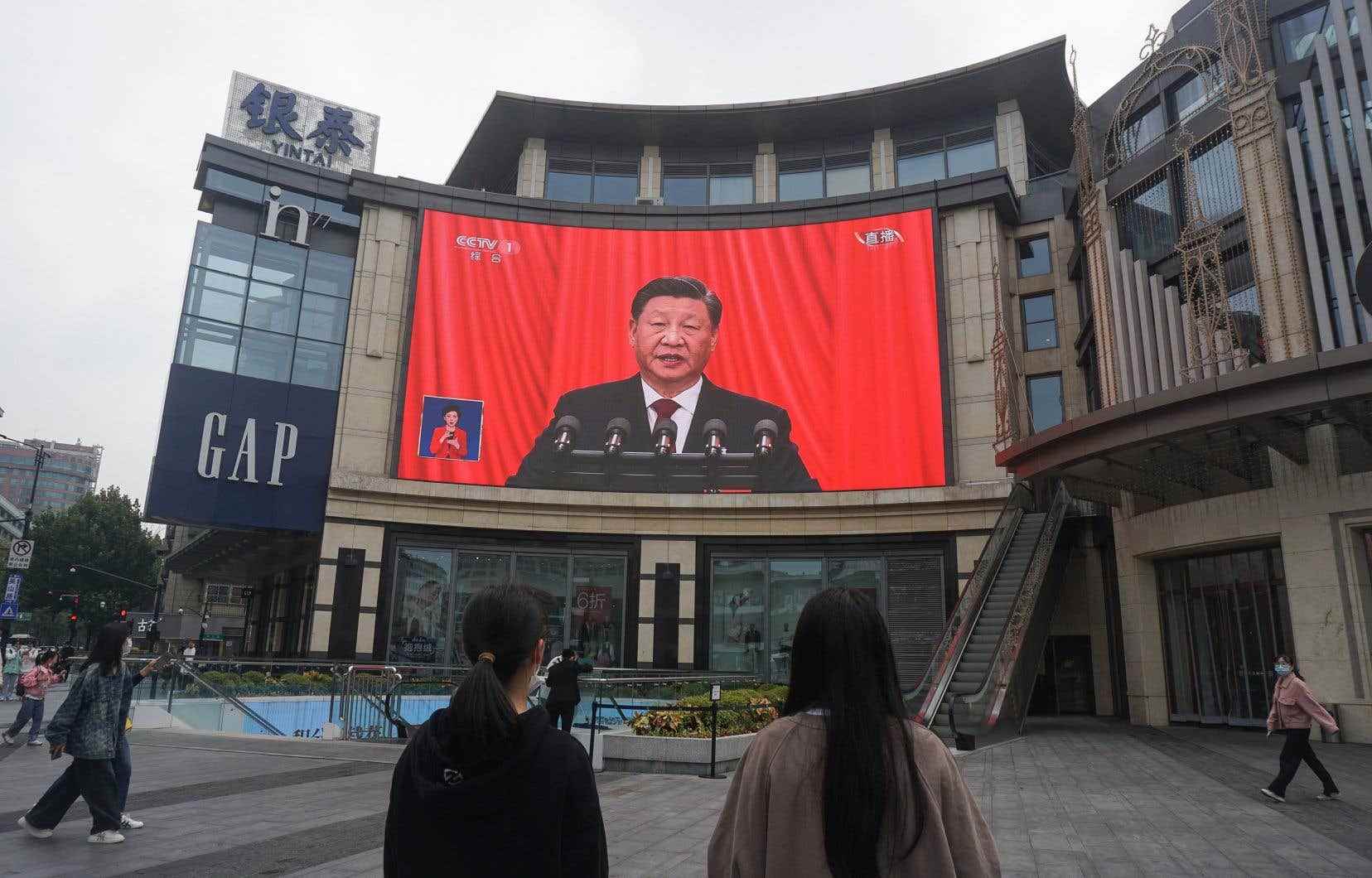When statistical data is as much a measurement tool as a means of asserting oneself, and when, moreover, one does not have the right to contradict it, it is not surprising to end up with distorting mirrors.
The new figures on China’s gross domestic product (GDP) were to reveal an “exceptional” economic performance, a spokesman for a Chinese government agency said the day before, confirming a “significant rebound in the third quarter”. But now, on Monday, the National Bureau of Statistics indicated that the publication of these new data had been postponed, without specifying when or why.
It was probably no coincidence that this unusual and unexpected announcement coincided with the launch of the 20e Congress of the Chinese Communist Party which was, for the first time since the death of the Great Helmsman, Mao Zedong, to renew President Xi Jinping for a third term. It came at a time when the state of health of the world’s second economy is particularly worrying, recalled last week, The echoes.
Its household consumption, investments and exports have been hit hard by the government’s “zero COVID” policy and the collapse of its real estate sector which accounts, in total, for around 30% of GDP.
The country must also deal with the decline in its exports that will result from inflation and the global economic slowdown, as well as with the technological war waged on it by the United States, which is trying to slow down its catch-up in terms of advanced semiconductors. . In addition to these cyclical problems, China also faces many structural challenges, such as an aging population, declining productivity, spiraling debt and record wealth inequality.
It is hard to see, in this context, how the government’s objective of 5.5% growth this year could still be achieved, having not done better than 2.5% during the first half of the year. According to the IMF, we will have to settle for 3.2% this year and 4.4% next year and accept, for the first time in 30 years, a performance below that of the rest of Asia.
But OK. We will apparently have to wait to see the most recent figures on Chinese GDP. Beijing had also postponed the unveiling of the latest export statistics a few days earlier.
mirror, mirror
It is difficult to know why, observed the experts quoted on Tuesday by the wall street journal. The new numbers could hardly be worse than the last ones. Perhaps we just wanted to avoid at all costs diverting attention from the Party Congress and its celebration in honor of President Xi.
It is worth pointing out, however, that this is happening as government and private economic research firms in China increasingly restrict access to their data and as more and more analysts are also forced to correct or to delete their positions if they do not appear favorable enough.
Economists have long complained about the difficulty of getting an accurate picture of the situation in China. We have learned to be wary of certain official statistics which correspond a little too perfectly to the objectives of the Party or which sometimes depict a world that is too good to be true. This should not always be seen as manipulation by the leaders of the regime, but sometimes as the desire of local authorities to appear better in the eyes of their superiors.
This has led experts to turn to different indicators to get a fairer idea of the reality than that depicted by the official figures, in particular those of the GDP, explained this summer. The Economist.
The current Chinese Premier, Li Keqiang, was one of them when he governed a northeastern province. He then preferred to rely on electricity consumption, the transport of goods by train and the volume of loans granted by banks. The tool developed by the consulting firm Capital Economics includes eight other indicators. It allowed him to estimate that China’s total economic growth from 2014 to 2019 was not 48%, as reported by official statistics, but 33%.
Self-portraits of autocrats
But China is not the only one to have trouble with its official economic statistics, specify the experts. In fact, all governments would probably like to be able to embellish their achievements, especially economic ones, but democratic regimes usually have independent statistical agencies, opposition parties, independent experts, a free press and freedom of speech that prevent them from doing as they see fit. This is not the case for autocratic regimes.
Some different tools for measuring economic development can sometimes be surprising. One of them is the level of artificial lighting in countries at night.
Based on satellite images, a researcher from the University of Chicago, Luis Martinez, has found that, unlike democratic countries, the GDP figures reported by dictators are often much higher than the image of their countries suggests. countries seen from the sky. The total growth of autocratic regimes from 2002 to 2021 should even be reduced by almost half, that is to say from 147% to 76%.
The dictators would especially tend to exaggerate their economic successes from the moment when their country becomes too rich to be entitled to international financial assistance. Beautification work would become particularly tempting in difficult times and would be done on the data that is easiest for governments to manipulate, such as public spending and investment.
Will economists have to ask someone on the International Space Station to take a picture for them the next time it passes over China at night so they can take stock of the state of its economy?
